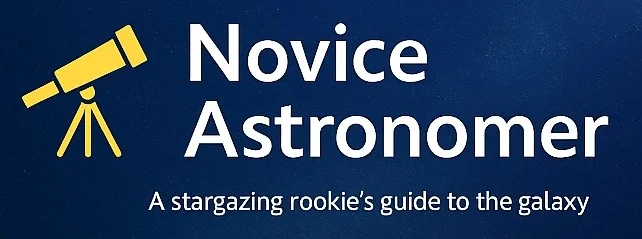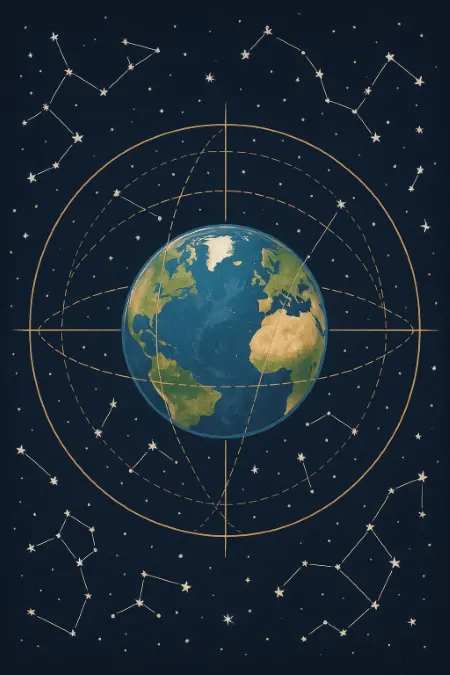August was a wash.
August was a particularly uncooperative month for astronomy in our area. Literally every event was cancelled due to weather. So, our September meeting became an opportune time to collectively vent our frustration—and to find out what we might (hopefully) look forward to in the month ahead.
Club President Paul took the lead on the presentation, bringing us back to basics with an in-depth version of his Astro 101. I’ve had the pleasure of attending his Astro 101 Sky Tour at a star party before, so I figured this would all be review for me. It was not. It was a whole new bag of tricks that I was not expecting—and could barely process.
It didn’t help that there was an overwhelming amount of ambient noise competing for my attention, and I wasn’t sitting close enough to get legible snapshots of all the slides. I did manage to jot down and make sense of a few things. Others remain enigmas for now.
Oh—and while I skipped writing a recap for last month’s meeting, I did finally get the evergreen page up on Gary’s excellent presentation about how the universe might end (cheery stuff, right?). Check it out here.
📆 Upcoming Events and Such
Fingers crossed that the weather will be more forgiving this month—we’ve got some exciting events on the schedule, including an outreach in my neighborhood (finally!). That’s how I originally found the club, and this will be the first outreach here since I became a member. There’ve been others on the calendar, but they’ve all been cancelled. Here’s hoping for clear skies on September 24th!
I was very excited to hear about something called International Observe the Moon Night on October 4th—a NASA-sponsored nationwide outreach event.
We’ve also got the Orionids Meteor Shower coming up. There’ll be about a week of viewing starting October 21st. Paul gave us the good news/bad news rundown:
➤ Good – it peaks near a new moon, so viewing conditions should be ideal.
➤ Bad – it won’t really get going until around 3 AM.
Of course there’s the usual caveat: weather permitting. But since these meteors are fragments of Halley’s Comet, I’d love to catch a glimpse.
We also welcomed a new member named Lisa. She didn’t seem like a noob—appeared to know her stuff. (Compared to yours truly, anyway.) I’m sure she’ll be a great addition.
And as an added treat, our youngest member, 4-month-old baby Grayson, made another appearance. A remarkably quiet and well-behaved little fella, he did NOT contribute to the ambient noise problem.
Oh—and bonus—there were pumpkin pancakes. ‘Tis the season. Yes!
🌌 Paul’s Presentation Highlights
I was only half-prepared for what came next. Paul’s presentation went way beyond a basic sky tour. I couldn’t catch all the slides (or all the concepts), but I did my best to make sense of the main ideas. Here’s a simplified version of what stuck:
Understanding the Four Planes
Astronomers use four “planes” or reference systems to map the sky:
- Horizon Plane – Local to your exact location on Earth; it changes depending on where you stand. At sea level, you can only see about 3 miles before the Earth’s curvature hides the rest — but the conceptual horizon plane extends all the way around you.
- Equatorial Plane – This is Earth’s equator, extended out into space. It’s based on our planet’s daily rotation and is used to create a universal sky coordinate system.
- Ecliptic Plane – This is Earth’s orbital path around the Sun—the 365-day journey. The zodiac constellations lie along this plane.
- Galactic Plane – This isn’t a “path” like the others—it’s the flat, disk-shaped structure of the Milky Way itself. Most of our galaxy’s stars, gas, and dust lie along this plane, including our solar system. It helps us map the sky relative to the galaxy’s larger structure.
Each plane gives a different “grid” for understanding space.
The Celestial Sphere
Imagine the night sky as a giant, imaginary dome surrounding Earth. That’s the Celestial Sphere—a visual model that lets us map star positions, constellations, and planetary movements. Paul brought an inflatable sphere marked with all the constellations visible from Earth. I finally got it when he explained that you have to imagine the Earth sitting inside the ball, looking outward.
💡 A helpful visual: This transparent celestial sphere on Amazon has a globe inside it. The product images are helpful to understand the concept. It’s pricey (over $100), so it’s not on my wishlist just yet—but looks pretty cool if you’re after a splurge.
A few more vocabulary terms I picked up:
- Zenith: The point directly above you (I knew this one)
- Nadir: The point directly below you (never heard of it)
- Circumpolar stars: Stars near the celestial poles that never rise or set—they just spin in circles all night (much like my brain most days)
Twilight Isn’t Just One Thing
- Civil Twilight – Sun is 6° below the horizon
- Nautical Twilight – 12° below
- Astronomical Twilight – 18° below
➤ True night begins when the Sun is 18° below the horizon—about 90 minutes after sunset.
(Pretty sure this varies by latitude, so the timing may shift depending on where you are.)
A Quick Note on “Opposition”
I was confused at first because I thought “opposition” meant the planet was at its closest to Earth. Apparently, that’s not quite right—although it’s often almost true. Skip tried to sketch it out for me on the back of my Village Inn receipt, which actually helped.
So here’s the deal:
When a planet is “at opposition,” it means the Earth is directly between that planet and the Sun. Picture them lined up like this:
Sun → Earth → Planet
From our point of view, the planet is opposite the Sun in the sky—rising at sunset, reaching its highest point around midnight, and setting at sunrise.
For outer planets (Mars, Jupiter, and beyond), opposition is usually when they appear biggest and brightest—and yes, very close. But since planetary orbits aren’t perfect circles, opposition isn’t always the exact closest point. Still, it’s the best time to observe them.
Coordinates 101
A few fun facts:
- Latitude runs East/West but measures North/South
- Longitude runs North/South but measures East/West
- The Greenwich Meridian splits Earth into east and west hemispheres
Bonus Tidbits
- Earth’s 23.5° axial tilt is what causes the seasons—not our distance from the Sun.
- In fact, Earth is actually closer to the Sun during the Northern Hemisphere’s winter.
- The zodiac is the band of constellations the Sun appears to pass through during the year, as seen from Earth.
- There are technically 13 zodiac constellations, but one got left out: Ophiuchus.
- The ecliptic is the Sun’s apparent path across the sky—it’s the line the zodiac constellations follow.
- The Milky Way crosses the sky at an angle to the ecliptic, making for some beautifully chaotic star fields.
💡What I’m Learning (Besides Science)
I’ll tell you one thing I definitely learned: there’s always more to learn—even about the basics. I honestly thought this would be a nice little refresher. Nope. 100% unfamiliar. But that’s what makes this club so worthwhile. I may be confused half the time, but I’m confused in good company—and I’m getting just a little less lost with each meeting.
Fingers crossed for clear skies this month. I’m hoping to spot the Moon, catch some Halley’s Comet fragments, and maybe even figure out what was on the rest of those slides.
Happy stargazing!
Affiliate Disclosure: Some links on this page are affiliate links. If you click through and make a purchase, Novice Astronomer may earn a small commission—at no extra cost to you. Thanks for supporting the site!

